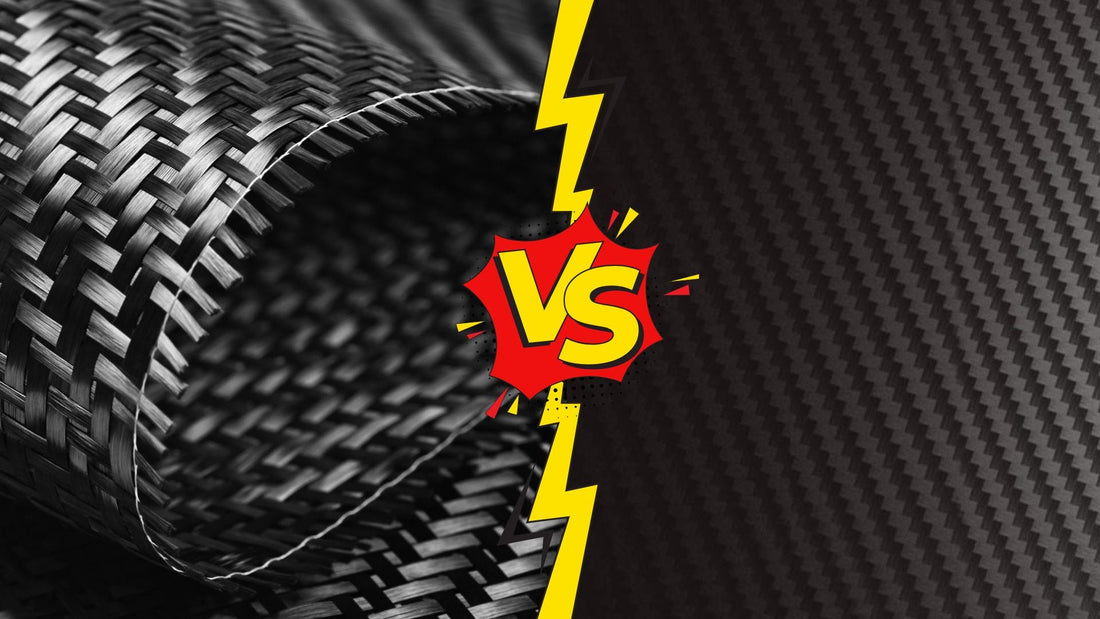
Why Aramid Fiber Is Better than Carbon Fiber for Phone Protection
Share
Selecting the best case material is essential when it comes to phone protection. Carbon fiber has long been the preferred material for durability and style in phone cases. But aramid fiber has gained popularity, and for good reason. While both materials provide outstanding strength and durability, aramid fiber beats carbon fiber in important areas like flexibility and impact resistance. If you’re considering upgrading your phone case, let us first discuss its key differences before citing reasons why aramid fiber is better than carbon fiber.
Table of Content
What Is Aramid Fiber?

Aramid fiber is a lightweight synthetic fiber with exceptional strength and heat resistance. It’s the same material used in bulletproof vests, aerospace components, and military gear. Kevlar, a DuPont brand, is one of the most well-known aramid fibers.
What Is Carbon Fiber?

Carbon fiber is a composite material of thin, strong carbon strands woven together and bonded with resin. It is commonly utilized in automobiles, aircraft, and high-performance sports equipment due to its outstanding strength-to-weight ratio.
Both the aramid and carbon fiber appear to be excellent choices for phone protection at first glance. However, aramid fiber is superior for everyday use. Here are reasons why that’s the case.
Why Aramid Fiber Is Better than Carbon Fiber: A Detailed Comparison
An important factor to consider when selecting a phone case is its impact resistance. Carbon fiber is tough and strong but has a weakness: it’s brittle in a way that it shatters under high impact. When dropped, a carbon fiber case does not bend to absorb shock, resulting in cracks in both the case and the phone.
Aramid fiber, on the other hand, is unique in that it can take in and expend energy. This means that when you drop your phone, the case bends slightly rather than shattering, thus decreasing the impact. That flexibility makes a huge difference in real-life situations, making an aramid fiber thin phone case much superior to carbon fiber.
🛒 Buyer Guide: We wrote a blog explaining the differences between the two kinds of aramid fiber on the market: the 600D and 1500D. Knowing their differences will greatly help you choose the right case for you.
Impact Resistance and Flexibility
In terms of resistance and flexibility, carbon fiber is rigid. It doesn’t absorb impact well. Instead, it transfers the shock directly to your phone, increasing the risk of cracks or internal damage.
Aramid fiber is flexible and impact-resistant, which allows it to absorb and dissipate shock rather than pass it to your device. This flexibility makes aramid fiber cases more durable and protective, ensuring your phone survives accidental impacts. Aramid fiber is designed to handle shocks and impacts much better.
Weight and Comfort
Carbon fiber cases are thicker and heavier because they require numerous resin layers for durability. A bulky, heavy phone case is not everyone’s cup of tea. You want protection without sacrificing the refined look of your phone.
On the other hand, Aramid fiber cases are ultra-thin and lightweight; they’re barely noticeable in your hand or pocket. Not only is aramid fiber lighter, but it also has a textured grip that makes it less slippery. That’s a huge plus if you’ve ever had your phone slide right out of your hands.
Signal and Wireless Charging Compatibility
The downside of a phone case made of carbon fiber is that the material can interfere with wireless signals. This is because carbon fiber is electrically conductive and can weaken Wi-Fi, cellular, and GPS signals when used in a phone case. On the contrary, an Aramid fiber is non-conductive. It won’t block your phone’s signals, allowing you to enjoy stronger Wi-Fi and clearer calls.
✅ Pro Tip: An aramid fiber case is a much better phone case since it won’t interfere with higher-frequency signals.
Durability Over Time
Carbon fiber can crack over time, especially if exposed to repeated drops or pressure. Aramid fiber is extremely durable, wear-resistant, and keeps its shape even after years of use. It’s also highly scratch-resistant, meaning your case will still look new after months of daily use. For example, bulletproof vests made from aramid fiber can last for years, proving how durable this material is.
What Is the Best iPhone and Android Aramid Fiber Case?
Fiberborne’s aramid fiber thin phone case stands out as a top contender in the race to be the best phone case in the market. This case not only offers robust protection but also maintains the sleek aesthetics of your device. At a mere 0.04 inches in thickness, this case preserves the slim profile of your iPhone 16 while providing substantial protection. Crafted from 600D aramid fiber, known for its high tensile strength and lightweight properties, the case offers exceptional resistance to drops, scratches, and impacts.
Aramid fiber is known for its flexibility and impact absorption. Unlike carbon fiber, which is strong but brittle, aramid fiber can absorb shocks without cracking, providing better protection against drops. Moreover, Carbon fiber is conductive and can interfere with your phone’s signals. Aramid fiber, being non-conductive, does not affect your phone’s connectivity, ensuring uninterrupted performance.
Conclusion
While carbon fiber is used in high-performance sports cars, it’s not the best material for phone protection. Aramid fiber outperforms it in flexibility, durability, scratch resistance, and wireless compatibility, all essential factors for keeping your phone safe. If you’re looking for a premium phone case that offers top-tier protection without the drawbacks of carbon fiber, aramid fiber is the best choice.
Products Featured In This Blog
Frequently Asked Questions
Why do phone case manufacturers choose aramid fiber over carbon fiber?
Manufacturers choose aramid fiber over carbon fiber for its superior impact resistance, flexibility, and better shock absorption. Aramid fiber’s ability to withstand drops and harsh conditions without compromising the phone's aesthetics makes it a popular choice.
Does aramid fiber provide better heat dissipation than carbon fiber?
Yes, aramid fiber offers better thermal conductivity and heat dissipation than carbon fiber, which helps prevent your phone from overheating during intense use or charging.
Is aramid fiber environmentally friendlier than carbon fiber for phone cases?
While both materials have a relatively low environmental impact, aramid fiber is generally considered more eco-friendly in its production and disposal than carbon fiber, which involves more complex and energy-intensive processes.
Related Readings

Written by Jenny
"Jenny is a fun-loving individual who enjoys immersing herself in stories, whether through books or films."


